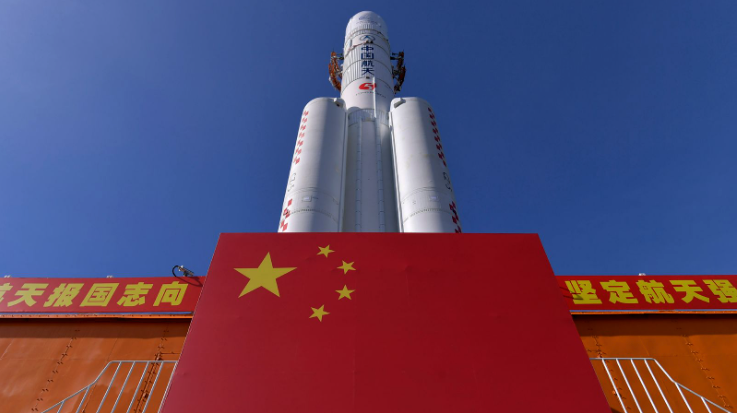Mystery Chinese Spacecraft Returns to Earth After 276 Days
On Monday, China's state media reported that an experimental spacecraft had returned to Earth after remaining in orbit for 276 days. The unmanned spacecraft reportedly completed an unprecedented mission to test the country's reusable space technologies.

Facts
- On Monday, China's state media reported that an experimental spacecraft had returned to Earth after remaining in orbit for 276 days. The unmanned spacecraft reportedly completed an unprecedented mission to test the country's reusable space technologies.1
- China’s state-run news agency reported that the country’s latest test of a reusable spacecraft is an “important” breakthrough in its research into cost-effective and sustainable ways to undertake future space missions.2
- The country's state media also said the spacecraft returned to the Jiuquan launch center in northwest China on Monday as scheduled. No details were given about the craft's whereabouts or the technologies used and tested after its launch in early August 2022. Beijing has yet to release images of the craft to the public.3
- Experts believe the craft could be equipped with advanced imaging and sensing equipment designed to gather intelligence on potential targets or monitor sensitive areas of interest. Another possible function is the deployment of small satellites — or sensors for civilian or military use — into orbit.4
- The Chinese spaceplane is believed to be almost identical to the X-37B spacecraft developed by the US that can carry crews of up to six. The craft is known to be the most capable spacecraft in use because it can change its orbit — a feature the Chinese are known to be actively pursuing.5
- China has recently been developing its space sector with further research into reusable launch vehicles, including a heavy-lift design that could enable the country to attempt to land astronauts on the moon and a rocket that could eventually be used for conducting large-scale space infrastructure missions.6
Sources: 1Sky News, 2Al Arabiya English, 3Reuters, 4South China Morning Post, 5Science Times, and 6Space News.
Narratives
- Pro-establishment narrative, as provided by The Conversation. The US is the leading force in the current space race between the US and China. Experts have pointed to China’s rapid advancements in space as evidence of an emerging landscape where China is directly competing with the US for supremacy. In a report published in August 2022, the Pentagon predicted that China is likely to surpass US capabilities in space as early as 2045. However, it is unlikely that the US will remain stagnant, because Washington is continuing to increase funding for space exploration.
- Establishment-critical narrative, as provided by Global Times. NASA's talk of a "space race" is ludicrous as the Chinese space program is not a threat to the US. China's exploration of the moon is dedicated to the advancement of humanity. As codified in the United Nations Outer Space Treaty, the moon does not belong to any single country on Earth, not even the US. Despite this, public attacks on China's space program have become routine for NASA in recent months because the spurious threat of China's own research makes a convenient justification for NASA's funding requests to Congress.






